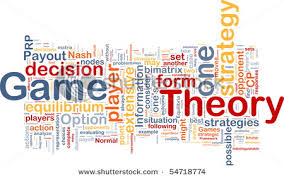Game Theory, Prisoner’s dilemma and the art of strategic decision making
One of the most interesting concepts in microeconomics is Game Theory. It is “a study of strategic decision making”. It describes how people make strategies, calculate their pay-offs and then make decisions rationally. A game essentially has three elements – players, strategies and pay-offs.
Now I am going to demonstrate with an example how game theory works and helps in making efficient decisions.
Prisoners’ Dilemma
This is the most famous game studied in game theory and was introduced by A.W. Tucker in the 1940s.
Let us consider two suspects who have been arrested for a crime. The district attorney has little evidence and is eager to extract a confession. So she separates the suspects and tells each – “If you fink on your companion and your companion does not, I can promise you a reduced (two-year) sentence, whereas your companion will get 6 years. If you both fink on each other, you will each get a four-year sentence.” In addition, both suspects know that if neither of them finks then due to lack of evidence they’ll get a sentence of three years.
According to conditions given above, each player (suspect) has two possible strategies – fink or remain silent. Therefore, we write strategy sets as S1= S2= {fink, silent}. Here we will specify pay-offs as years of freedom. The matrix shown below thus, depicts the strategies and pay-offs of each player.
| Suspect 2 | |||
| Fink | Silent | ||
| Suspect 1 | Fink | a1=2, a2= 2 | a1= 4, a2= 0 |
| Silent | a1= 0, a2= 4 | a1= 3, a2= 3 | |
Now if you look at the table, most of you will predict that both will be silent. It may look like it’s the best prediction but it’s not. Let’s see how. Imagine that you are suspect 1. You do not know what suspect 2 will do yet. Suppose suspect 2 chooses to fink. The best move for you would now be to fink because then you’ll get two years of freedom as against none if you remain silent. Now suppose suspect 2 chooses to remain silent. Finking will still be better for you because it will give you four years of freedom as against three years of freedom. Now since suspects are symmetric, the same reasoning holds if you imagine yourself in suspect 2’s position. Therefore, the best prediction in this game, prisoners’ dilemma, is that both will fink.
The prediction has a paradoxical property – if both the suspects fink, they only enjoy two years of freedom, but if they both were silent, they’d enjoy three years of freedom. The paradox does not imply that the suspects are stupid or that the prediction is wrong. Though the outcome is inefficient for the suspects, if we were to shift our focus to society at large, both finking might be a good outcome for the criminal justice system.
In my next article, I’ll show how everybody wants the provisioning of public good but nobody is willing to pay for it – the problem of free riding in public good.
Click here for government certifications





16 Comments. Leave new
Game theory is one of the most interesting economic concepts and also the one that can be easily applied anywhere.
the firms in oligopolistic markets use the concept of game theory in making decisionsabout the quantity or price of a product .
very detailed explanation…good
well explained 🙂
Nice!
NICE ONE
A little complicated but quite interesting! nice one.
nice
I too find game theory very interesting!
Good work
Fair introduction to the subject
best yaar
Interesting to read!
nice
awesome…
Nice work!
well done